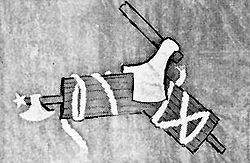| |||||
| Decades: | |||||
|---|---|---|---|---|---|
| See also: | |||||
Events from the year 1921 in Italy .
| |||||
| Decades: | |||||
|---|---|---|---|---|---|
| See also: | |||||
Events from the year 1921 in Italy .

In 1921 Fascist and anti-Fascist violence in Italy grew with Italian army officers beginning to assist the Fascists with their violence against communists and socialists. [1] With the Fascist movement growing, anti-fascists of various political allegiances combined into the Arditi del Popolo (People's Militia). [2]
The Italian police forces are sympathizing with the Fascist movement and do little to stop the violence and illegal acts. Also helping them are local magistrates, who crack down on leftists but give Fascists lenient sentences. Along with the police and the magistrates, the military helps supply materiel to the Fascist movement. Authorities in Rome attempt to stop this collaboration but are unable to enforce control. Without the semi-official collaboration, it is hard to see how Fascism could have spread so far and so fast in 1921 and 1922 in parts of Northern and Central Italy. [3]

